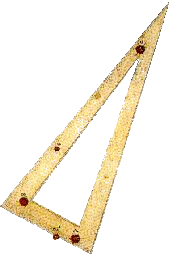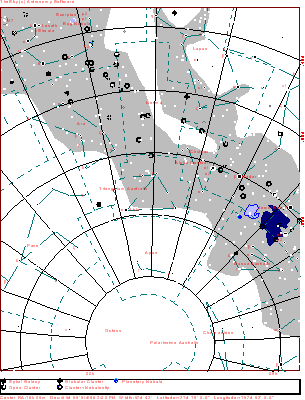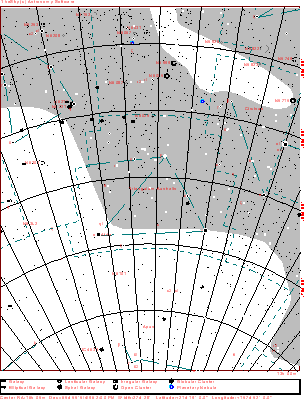
| Home | Deepsky Atlas | TheAstronews | Links | Solar System | ||||||

Hawaiian Astronomical SocietyConstellations: Triangulum Australe -- Another Carpenters' Tool |
||||||||||
 |
| Triangulum from Bayer's Uranometria |
Bayer was born in Rain, Bavaria in 1572, began his study of philosophy in Ingolstadt in 1592, and moved later to Augsburg later to begin work as a lawyer. He soon grew interested in astronomy, and published Uranometria in 1603 as a popular work. It was the first atlas to make use of Tycho Brahe's accurate measurements of stellar positions. These were far better than Ptolemy's rather incomplete listing. In addition, Bayer added 12 southern constellations to Ptolemy's original 48.
Bayer became legal advisor to the Augsburg city council in 1612 and died in 1625. For more information on Uranometria, click here.

Click the map for a 916x1200 version of the above. Click here for a map better suited for use in the field.

This a more detailed view of the constellation. The map displays stars to magnitude 10, and deepsky objects to magnitude 12. Click here for a map better suited for use in the field.
 51k JPEG. Caldwell 95 (NGC6025) is an open cluster located 3.1° NNE of Beta Trianguli Australis. Dreyer calls it bright (mag. 5.1), very large (12'), fairly rich (with 60 stars of mag. 7 and fainter) and little condensed. From the Digital Sky Survey. 51k JPEG. Caldwell 95 (NGC6025) is an open cluster located 3.1° NNE of Beta Trianguli Australis. Dreyer calls it bright (mag. 5.1), very large (12'), fairly rich (with 60 stars of mag. 7 and fainter) and little condensed. From the Digital Sky Survey.
|
If you have any questions about the Hawaiian Astronomical Society
please
(link requires javascript).